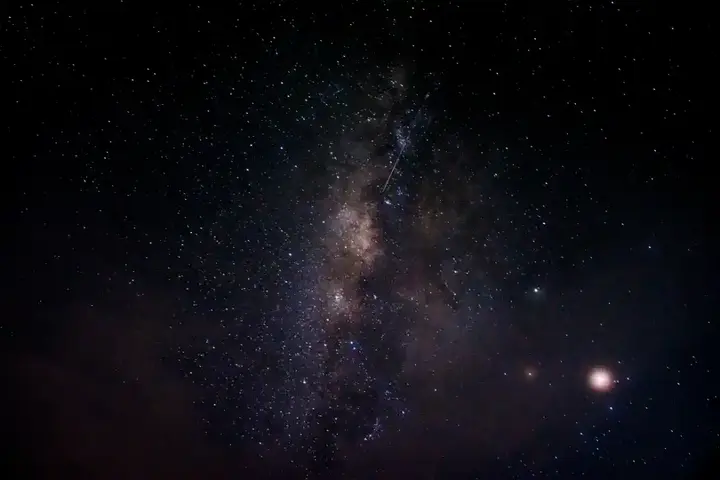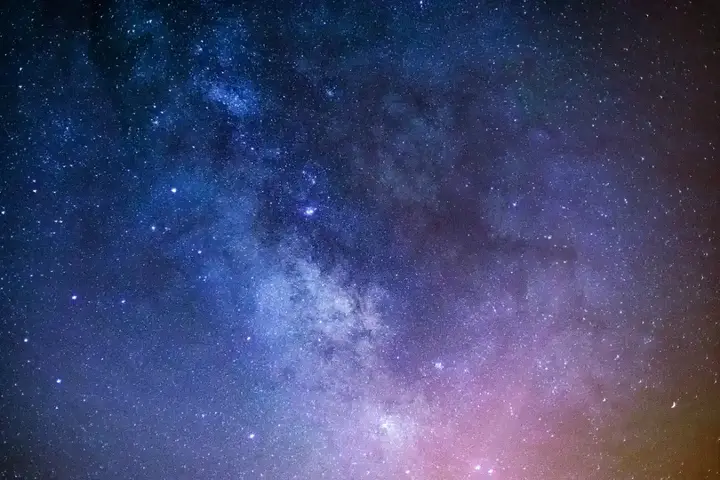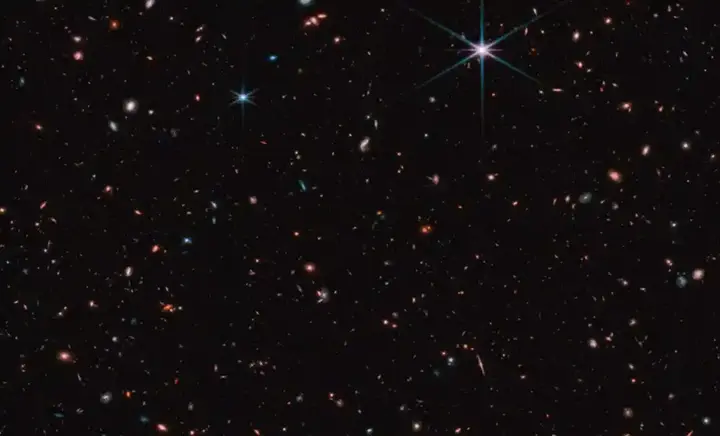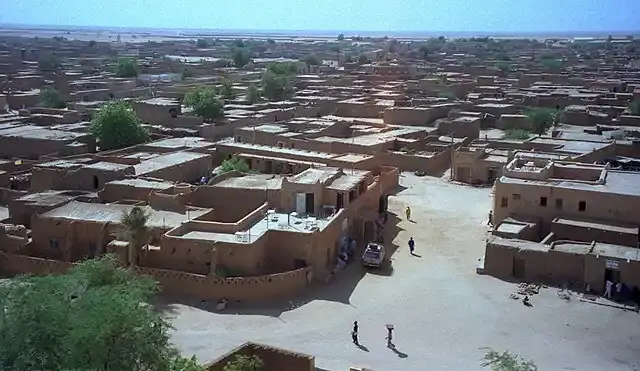Is the universe still making new galaxies?
We consider galaxies to be ancient in formation. Our galaxy, the Milky Way, formed 13.6 billion years ago, and the James Webb Space Telescope allowed us to look at some of the first galaxies in the early universe. But are galaxies still born today?
It is a fun question because it allows us to delve into the complex and beautiful process of galaxy formation. Let's take a look at the possibilities.
First answer: No

Galaxies are very easy to identify. They are large clusters of stars, gas and dark matter. They differ greatly from each other, with a model galaxy about 100,000 light-years wide, while a typical distance between galaxies is about one million light-years.
Sometimes, galaxies merge or clump together into clusters, but with some exceptions, we can pretty much separate one galaxy from another. It's like cities in the countryside: the distance between cities is greater than the cities themselves, so it's easy to monitor and identify. Sometimes, cities cluster side by side, and sometimes, a sprawling city devours its neighbors. But in general, the city is just a city.
Recommend
However, determining the beginning of the galaxy is a different matter. Galaxies originated in the early universe through a gradual process that began from the first second of the Big Bang. At that time, small pockets of above-average density appeared and grew steadily over the following hundreds of millions of years. At first, only dark matter could flow inward, as ordinary matter was busy intertwining with itself. But once the pockets of dark matter became large enough, they attracted the normal matter surrounding them.
As ordinary matter accumulated, it compressed, crumbled, and gave light to the first stars. These proto-galaxies continued to consume more gas, merge with their neighbors and grow into the completed galaxies we see today.
Thus, in many ways, no new galaxies have emerged today. The process of building them – implanted as small differences in density or initial aggregation of dark matter – a process that occurred in the ancient universe and will not be repeated again, is over.
There are no more proto-galaxies and no more clouds of gas waiting for the opportunity to squeeze and create a new galaxy in the current universe.
When it comes to galaxies, what we see is what we get.
Second answer: Yes

But this is just one way to determine the beginning of the galaxy. We can also look at another pivotal step: the appearance of the first stars. Going back to the city's analogy, there is a difference between planning a city for the first time – defining its boundaries with boundary markings and raster lines – and starting the first people moving into it.
If we focus only on star formation, we will see that this is an ongoing process even in the modern universe. In recent years, astronomers have built a detailed understanding of a measure called the stellar mass function. This is a basic demographic census that maps the number of luminous stars in each galaxy – in other words, the amount of mass in the form of stars within each galaxy at different eras in the universe.
Stars make up only a tiny percentage of the mass of the galaxy; the rest goes to dark matter and random masses of gas. However, stars make the galaxy what it is, and are much easier to observe than any other galactic component.
With new surveys that have sampled galaxies across the universe, astronomers have recently discovered that the stellar mass function is on the rise across the board. This means that the number of small, medium and large galaxies is larger than it was billions of years ago.
The new small galaxies don't come from the appearance of primordial galaxies in the seeds of dark matter; they are clumps of matter that already exist and are just beginning to form stars. Larger galaxies, on the other hand, are mostly driven by the continued fusion of smaller galaxies.
So, in at least one important way, new galaxies continue to emerge on the cosmic scene as they are illuminated by new rounds of star formation. It has always been there, hanging for billions of years, but only now it makes itself visible. Most of the gas inside the galaxy won't turn into stars, and it can last for very long periods without consuming a lot of material — and it can take a really long time to start the galaxy in the first place.
Dark Energy

But it is a pity that the ceremony will not last forever. The problem here is that the universe is not only expanding, but is accelerating – an effect known as dark energy. Although astronomers still don't understand what drives dark energy, they can observe its effects on the rest of the universe: it spreads everything.
As the universe ages, it becomes harder for matter to clump to form new galaxies and drive the continued formation of stars, and the peak of star formation ended billions of years ago. As new galaxies continue to glow, their rate of emergence slows, with fewer and fewer new galaxies emerging each year.
However, the galaxies that exist today will continue to evolve, as stars continue to form and the merger events that shape their structures and properties continue. One prominent astronomer said, "We see galaxies forming stars today, but the rates are much lower than during the peak of star formation."
We still have time and galaxies will continue to form stars for hundreds of billions of years to come, but we should enjoy the concert as long as it lasts.
Conclusion

Galaxies are a topic that continues to interest astronomers and astrophysicists. Recent studies and observations have provided new insights into whether new galaxies are still born today.
The future of galaxy formation will be affected by the balance between dark matter and dark energy and the availability of gas and dust to form stars. The ongoing study of these factors will help astronomers understand how galaxies continue to change over time.
By examining the processes involved in the formation of galaxies and the current state of the universe, scientists shed light on this complex and fascinating topic.
![]()
Do you know why hair becomes white with age and not skin?
White hair can show up early due to genetics, stress, vitamin B12 deficiency, or smoking. While aging is a natural cause, lifestyle and health factors also play a role. Sometimes, treating underlying issues like thyroid problems or vitamin deficiencies may help restore hair color. more- ADVERTISEMENT
![]()
Success Guide - How to learn the skill of planning?
Success Guide - How to learn the skill of planning? more- ADVERTISEMENT
![]()
Success Guide – How to turn your presentation into an exciting story?
Success Guide – How to turn your presentation into an exciting story? more- ADVERTISEMENT
![]()
A Simple Guide to Introducing Yourself: Creating an Unforgettable First Impression
Introducing yourself is more than just saying your name—it’s a chance to show personality, goals, and values. By sharing achievements, teamwork skills, and even hobbies, you can make genuine connections and leave a strong impression, all while staying clear, honest, and adaptable in every interaction. more- ADVERTISEMENT
![]()
The cave beneath Pembroke Castle and the fate of the early Britons
A hidden cave beneath Pembroke Castle has revealed ancient secrets, including animal fats and tools that trace the journey of early Britons from hunters to farmers. This incredible find brings new light to prehistoric life and the evolving habits of those who lived beneath the castle centuries before it was built. more- ADVERTISEMENT
![]()
Agadez Historic Centre, a fascinating African heritage site in Niger
Agadez, known as the "Gateway to the Desert," stuns visitors with its towering 27-meter clay minaret—the tallest in the world—and its rich blend of Tuareg culture, desert architecture, and caravan trade history. Its historic center, a UNESCO World Heritage Site, showcases enduring traditions and earthen beauty. more- ADVERTISEMENT
![]()
The Dream of Getting Rich Quick: Stories of Turning Good Fortunes into Millionaires Overnight
Overnight Millionaires: People Who Got Rich Quick more- ADVERTISEMENT
![]()
31 quotes a day that will make you mentally stronger
A month of wisdom with daily quotes invites deep self-reflection—from building awareness and humility to overcoming fear and finding peace. Powerful reminders like “start with yourself” and “simplicity over excess” show us that small, mindful changes make a meaningful impact. more- ADVERTISEMENT
![]()
Personal Success: Practical Steps Towards Achieving Goals
Personal success is about finding happiness in your own growth and goals, not just wealth or fame. It's a journey shaped by your values, efforts, and ability to adapt. Success comes from setting clear goals, staying motivated, and learning from every step along the way. more- ADVERTISEMENT
![]()
Historic Nizwa Fort... The splendor of construction since the seventeenth century AD
Nizwa, once Oman's capital, is famed for its mighty fort, rich history, and stunning mountain views. Its iconic circular tower, ancient defenses, and vibrant museum make it a top spot for visitors seeking a real taste of Omani heritage and breathtaking panoramas. more- ADVERTISEMENT





















